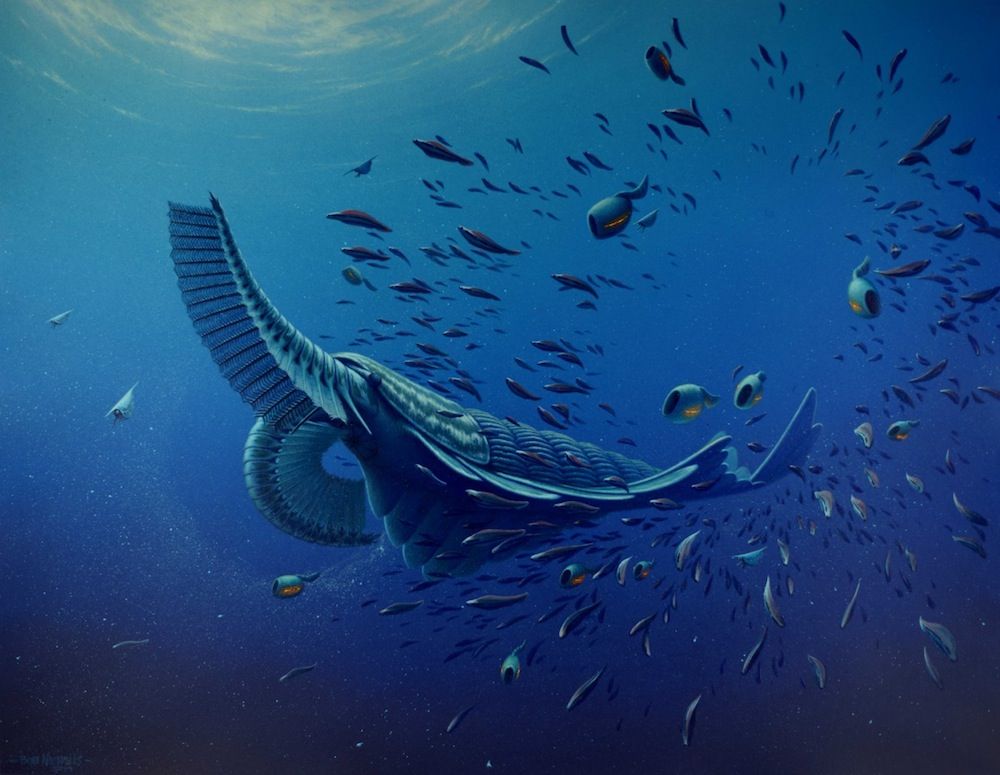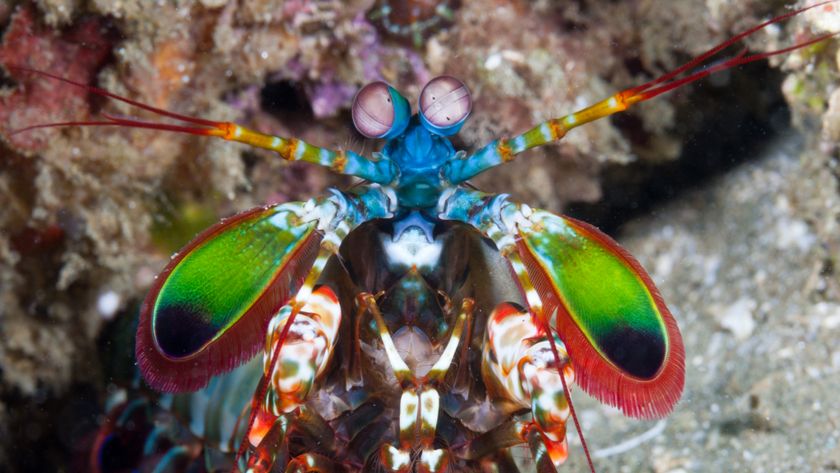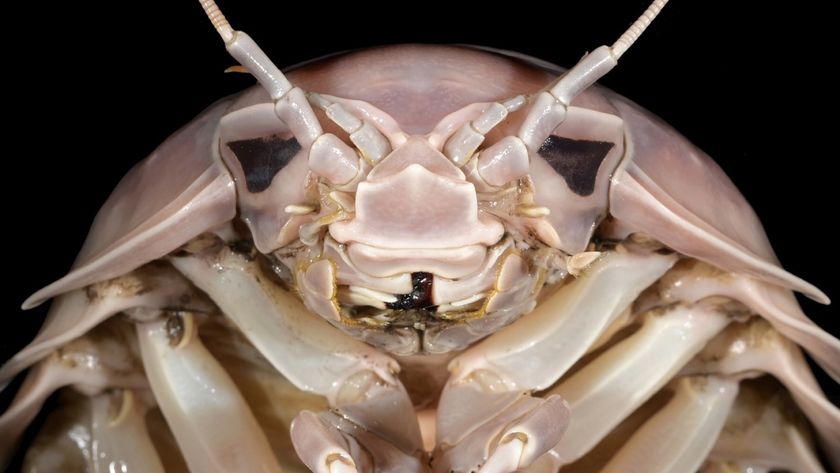
A new filter-feeding giant that trolled the Cambrian seas has been unearthed in Greenland.
The species, dubbed Tamisiocaris borealis, used large, bristly appendages on its body to rake in tiny shrimplike creatures from the sea, and likely evolved from the top predators of the day to take advantage of a bloom in new foods in its ecosystem, said study co-author Jakob Vinther, a paleobiologist at the University of Bristol in England.
Explosion of life
The new creature was unearthed in sediments known as the Sirius Passet formation. These shale-like deposits are teeming with primeval organisms from the evolutionary "big bang' known as the Cambrian explosion, a period between 540 million and 493 million years ago when most complex life on Earth emerged. [See Images of the Giant Cambrian Creature]
Before then, most life forms were bacteria or microbial mats, but during the Cambrian hard exoskeletons, jointed limbs, compound eyes and antennae evolved.
Today, the Arctic region is so far north that the excavation season lasts only during a six-week period of summer when the sun never sets, but simply circles around in the sky. In the Cambrian, however, the Arctic was a tropical ocean south of the equator, Vinther said.
At that time Greenland and North America were part of a huge supercontinent known as Laurentia, which was flipped on its side relative to its current orientation.
Sign up for the Live Science daily newsletter now
Get the world’s most fascinating discoveries delivered straight to your inbox.
Evolved giant
While on an excavation trip in 2009, the team unearthed fragments of strange feeding appendages attached to a head shield from an unknown creature. The appendages, which date to about 520 million years ago, belonged to a group known as anomalocarids, the top predators of their day.
These ancient sea monsters grew to about 70 centimeters (2.7 feet) long and "looked like something completely out of this planet," with massive frontal appendages for grasping prey, huge eyes on stalks, and a mouth shaped like a piece of canned pineapple, Vinther told Live Science.
But the appendages from T. borealis were different from those of other anomalocarids. Instead of large grasping claws, the front pieces sported fine, delicate bristles, much like the baleen found in the mouths of filter-feeding whales. [Video: See How the Giant Used its Filter-Feeding Appendages]
New food source
The strange-looking creature likely raked seawater for tiny shrimplike organisms similar to krill, and evolved from predatory anomalocarid ancestors. This shift from predation to filter feeding echoes the evolutionary trajectory of baleen whales and whale sharks, Vinther said.
"Every time you see these filter feeders — these gentle giants — evolving, they evolved from the apex predators," Vinther said.
When predators evolve a filter-feeding strategy, they typically do so because of a new bounty in available food. For instance, whales evolved baleen when a water passage opened up between South America and Antarctica, causing an upwelling of nutrient-rich deep water and fueling a bloom of algae and krill, Vinther said. That suggests a similar surge in sea life may have allowed these filter-feeding giants to thrive in the ancient Cambrian oceans.
T. borealis was described today (March 26) in the journal Nature.
Follow Tia Ghose on Twitter and Google+. Follow Live Science @livescience, Facebook & Google+. Original article on Live Science.

Tia is the managing editor and was previously a senior writer for Live Science. Her work has appeared in Scientific American, Wired.com and other outlets. She holds a master's degree in bioengineering from the University of Washington, a graduate certificate in science writing from UC Santa Cruz and a bachelor's degree in mechanical engineering from the University of Texas at Austin. Tia was part of a team at the Milwaukee Journal Sentinel that published the Empty Cradles series on preterm births, which won multiple awards, including the 2012 Casey Medal for Meritorious Journalism.











